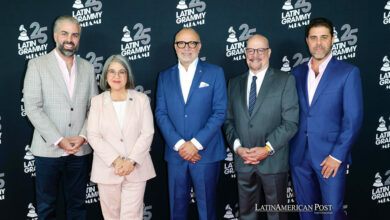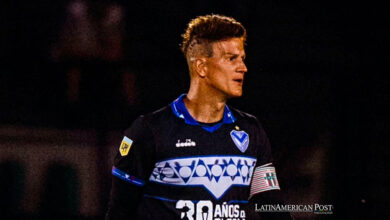Republic of the Congo: is there a genocide in the African country?
There are reports of thousands of Congolese deaths, rape policies for women and more than 10 million deaths since 1996.

Activist from the Democratic Republic of the Congo, Caddy Adzuba. / Photo: rtve / Composition: LatinAmerican Post
LatinAmerican Post | Iván Parada Hernández
Listen to this article
Leer en español: República del Congo: ¿hay un genocidio en el país africano?
Activist Caddy Adzuba, of Congolese origin, denounced from Madrid (Spain) that a genocide is ongoing in her country. Among her revelations, Adzuba says that women in the Democratic Republic of the Congo (DRC) are not only raped, but objects are also introduced from knives to grenades, reaching unimaginable levels of sexual and gender-based violence.
To contextualize public opinion, the activist has given this drama a face; Monica's, whose husband was shot dead in front of her five children, who were forced to rape her. According to the Europa Press agency, she was subsequently kidnapped and told that she had been fed with the remains of her children, which was confirmed after her captors showed her their heads. Finally she was released and, as Adzuba narrates, all these episodes drove Monica crazy, who died when she couldn't stand what happened.
This cruel story is just a sample of the harsh reality that women in the DRC are living. "There are many Monicans in the Democratic Republic of the Congo," says Adzuba who describes this reality as a genocide. What happens within that country so that such a phenomenon occurs without any obstacle?
Context of a war
DRC is going through a complex and long internal conflict that contains economic, political and even ethnic factors. In 1996, a conflict known as the First Congo War broke out, whose motive was the overthrow of Congolese dictator Mobutu Sese Seko who remained in power for 32 years. This was an apologist and facilitator of the Tutsi genocide in neighboring Rwanda, in addition to having broken his country, increasing his personal fortune in the process.
This war ended in 1997 thanks to the support of the Tutsi government of Rwanda and local militias. Among the consequences of this event, the name of the country was changed – from Zaire to its current name – in addition to the establishment of the Laurent Kabila government and the promise of the democratization of the DRC. However, in 1998, a Second Congo War began with deeper motivations.
Also read: Which are the OECD countries with the most stoppages in the year?
An insurgent group occupied the city of Goma, on the border between DRC and Rwanda, presumably with the support of this second country and Uganda. The Tutsis feared a second genocide against them in Congolese territory, in addition to claiming part of the territory of the neighboring country. The capital, Kinshasa, was fenced in a matter of days. Only until the internationalization of the conflict, with the entry of Zimbabwe, Angola, Sudan, Namibia, Chad and Libya in support of the DRC, the balance was in favor of the Kabila government. He was killed in 2001 by a member of his personal guard in the presidential palace. Faced with this assassination, parliament pointed to his son Joseph as president, who was in charge of meeting with his counterparts to cease hostilities.
Current panorama
While violence was significantly reduced in subsequent years, peace agreements were signed between Uganda, Rwanda and the DRC, the internal and regional situation remains fragile. In the midst of the difficulties in establishing a lasting peace are the natural resources of the area; diamonds, gold, and coltan, among others, minerals with a high commercial value.
In addition to this, regional tension will not be relieved because its roots date back to the 19th century with the distribution of Africa at the hands of colonial powers. The partition only generated subsequent ethnic and territorial conflicts and there is little that has been done to repair these conditions.
Also read: Finland gets world youngest prime minister. Who is Sanna Marin?
Caddy Adzuba denounces that her country is like “a soccer field with parties and referees, but without an audience”, referring to the little attention that the international community pays to a deep conflict that has regional powers defending its own interests. The sexual violence that she makes visible is only one of the dimensions of this war, the Congo also suffers epidemics of diseases and famine.
According to UNICEF, the DRC fights the largest measles epidemic in the world, with approximately 5110 cases. The UN, meanwhile, estimates that 13 million people suffer from food insecurity in a country of 82 million; 15% of the population.
So can we talk about a genocide? Congolese people are dying because of their internal conflict and international tensions, because of sexual and ethnic violence, hunger and greed behind the resources of their territory. There may not be an intention to exterminate its population because of its "Congolese" status, as happened to Jews during World War II, but there are already 10 million victims. Without compromised intervention of the powers, that figure can be much higher.





